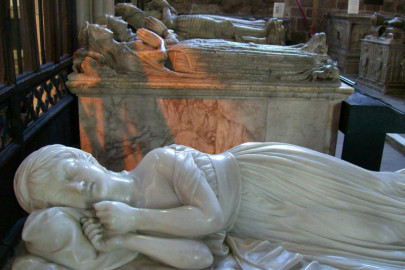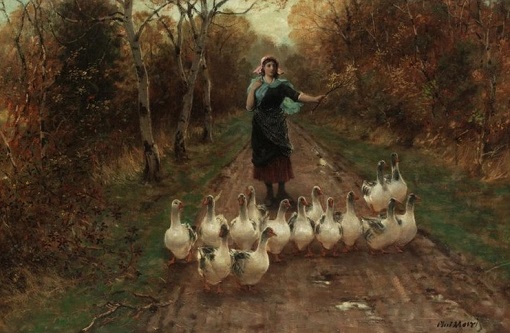What do the unsettling and astonishing multi-generational migratory habits of the monarch butterfly tell us about humans?…
The multiple life stages of butterflies were strangely upsetting to me as a boy. Their transformations were supposed to inspire wonder, and the eruption of the adult butterfly from the pupa, I was told, represented Christ’s resurrection. But the caterpillar, the pupa, and the imago (adult) seemed to have nothing to do with each other. How could they be one creature? The thought of myself undergoing a similar metamorphosis was alarming. Dewy-winged and unrecognizable, as I emerged from my chrysalis, would I remember the fat and happy days of my caterpillarhood? Would I be a stranger to myself?
My family and I recently visited a monarch butterfly wintering site on the California coast near Santa Cruz. I had been before but not paid much attention. I knew already that monarchs were migratory. They’re as large as certain birds, so they might as well act like them. What I did not understand until this visit, and what no bird (I think) can match, is that they accomplish their migration cycle over the course of four successive generations. The individual butterflies leaving the eucalyptus grove in early spring do not return. It is their great-grandchildren that return instead. No one has successfully explained how this happens.
There are various theories, of course. Is it possible that monarchs pass down a genetic memory of the landscape, an inherited mental map of rivers and hills and mountain ranges that need to be followed or crossed? Perhaps, instead, they leave chemical markers in attractive spots to reassure their offspring that they’re headed in the right direction. Or do they steer themselves by the stars or by the angle of the setting and rising sun? It may be that monarchs, like certain birds, navigate by reference to unseen currents in the earth’s magnetic field.
Whatever the mechanism of their return, the migration plays out like this: Generation 4 (let’s start here) emerges from a state of active diapause in early spring when the duration of daylight exceeds 11 hours and the temperature is pleasant. They mate and move northeastward, laying eggs in milkweed patches of California’s inland valleys. After progressing through the larval and pupal stages and becoming butterflies themselves, these monarchs (Generation 1) migrate over the crest of the Sierra Nevada into the Great Basin. As the year progresses, Generations 2 and 3 follow the pattern of Generation 1, moving deeper into the continent, as far as the Rocky Mountains and eastern British Columbia.
This is where our next Generation 4 is born in the early fall, but this fourth generation differs from its parents. Rather than having a total lifespan of 6-8 weeks, these will live for 6-8 months. And rather than make the return to the Pacific coast by generational stages, these will make the whole trip (more than a thousand miles) at one go. Somehow they will find the groves of eucalyptus and Monterey pine that their great-grandparents had once known. Gathered together in colonies of thousands, in a diapausal state (chaste but not inactive), they will live off their lipid reserves until spring and love and the thirst for travel return.
Thinking of the monarchs, it occurs to me that there are two habits of long standing which guide how humans perceive other animals. The first is to ascribe human qualities to the animal in question – to see ourselves in them. The second is to match animal behaviors with behaviors somehow parallel in humans – to see them in ourselves. These are natural urges, I think, sometimes enlightening, and maybe unavoidable. Science, by contrast, wants to see the natural world objectively, as if the thing doing the seeing weren’t human at all but a disembodied eye – the eye, curiously, of scientific impossibility, perhaps the eye of God. But outward properties and symbolic suggestions are hard for us to disentangle.
It may be, of course, that a butterfly is only ever a butterfly. Faith sees Christ in the insect. As a boy of twelve I found the insect in myself, or feared that I might: a chrysalis suspended between the two apparently irreconcilable worlds of childhood and adulthood. I don’t know what to do with these analogues, but I do not want to let go of them. My children today make the same journey my grandparents made. When I look closely enough, with a certain eye, I discover miracles of return in all things. Like the butterflies, we endure our cramped transformations and do not cease to be ourselves.












A wonderful post, Douglas – and Wonder is surely the word. The Monarch’s four-generation migration is a wonder of the natural world. It is hard to see quite how conventional scientific thinking can explain it (well, it doesn’t really try) – or indeed the whole business of metamorphosis: that a caterpillar can pupate, turning into an undifferentiated goo, then emerge as a butterfly. There was an experiment that showed a ‘taste’ instilled in a caterpillar carries over into the butterfly – where has it been embodied in the interim, how could it have survived?
enjoyed this a lot
That was excellent.